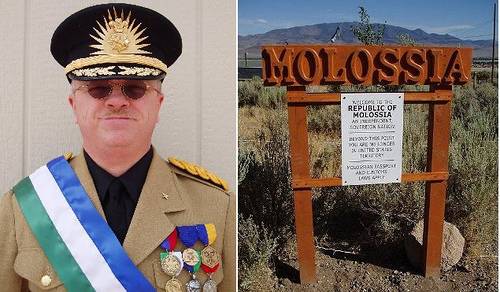Dorothy Parker grew tired of hearing Mary Sherwood talk about her pregnancy.
So when the baby arrived, she sent a telegram:
GOOD WORK, MARY. WE ALL KNEW YOU HAD IT IN YOU.
Dorothy Parker grew tired of hearing Mary Sherwood talk about her pregnancy.
So when the baby arrived, she sent a telegram:
GOOD WORK, MARY. WE ALL KNEW YOU HAD IT IN YOU.
Only four days ago, right in the next farm house to the one where I am spending the summer, a grandmother, old and gray and sweet, one of the loveliest spirits in the land, was sitting at her work, when her young grandson crept in and got down an old, battered, rusty gun which had not been touched for many years and was supposed not to be loaded, and pointed it at her, laughing, and threatening to shoot. In her fright she ran screaming and pleading toward the door on the other side of the room; but as she passed him he placed the gun almost against her very breast and pulled the trigger! He had supposed it was not loaded. And he was right: it wasn’t. So there wasn’t any harm done.
— Mark Twain, “Advice to Youth,” 1882

Kevin Baugh looks pretty happy, doesn’t he? Well, you would be, too — Kevin is president of the independent micronation of Molossia, an acre of Nevada desert that he claimed as an independent republic in 1999.
Molossia has a population of 3; its inhabitants speak English and observe Molossian Standard Time, which is 7 hours 29 minutes behind Greenwich. The local currency is the Valora, which equals a partial tube of Pillsbury cookie dough.
The nation’s capital, Espera, surrounds the Baugh residence near Dayton, Nevada. Tourism has reached 10 visitors a year, but you have to surrender your pocket change at the border, and you can’t bring any firearms, incandescent light bulbs, catfish, onions, walruses, or “anything from Texas except Kelly Clarkson.”
Its motto is “Nothing Ventured, Nothing Gained.”
Be good, be good, be always good,
And now & then be clever,
But don’t you ever be too good,
Nor ever be too clever;
For such as be too awful good
They awful lonely are,
And such as often clever be
Get cut & stung & trodden on by persons of lesser mental capacity, for this kind do by a law of their construction regard exhibitions of superior intellectuality as an offensive impertinence leveled at their lack of this high gift, & are prompt to resent such-like exhibitions in the manner above indicated — & are they justifiable? alas, alas they
(It is not best to go on; I think the line is already longer than it ought to be for real true poetry.)
— Mark Twain
Any large-scale change in human behavior will literally change the human race: Because such a change alters the conditions under which individuals are conceived, our grandchildren in one scenario will be different people from those in another. This is particularly true in sweeping policy matters such as the environment, global warming, etc.
This seems to suggest that we needn’t feel guilty about our poor stewardship. The descendants who would benefit by our reform are different from those who will suffer at our neglect–and we owe a duty only to the latter.
“The Travelling Egg”
Procure a goose’s egg, and after opening and cleaning it, put a bat into the shell, and then glue a piece of white paper fast over the aperture. The motions of the poor little prisoner in struggling to get free, will cause the egg to roll about in a manner that will excite much astonishment.
— Samuel Williams, The Boy’s Treasury of Sports, Pastimes, and Recreations, 1847
“How to Melt Steel”
Heat a piece in the fire till it is red hot; then holding it with a pair of pinchers or tongs, take in the other hand a stick of brimstone, and touch the piece of steel with it; immediately after the contact, you will see the steel melt and drop like a liquid.
— “Uncle George,” Parlour Pastime for the Young, 1857
“The Gun Trick”
Provide yourself with a fowling piece or musket; permit any one to load it, only retaining for yourself the privilege of putting in the ball. But instead of loading it with a real ball, retain the latter in your possession, having had a recognisable mark put upon it, and load with an artificial one made of black lead. On the application of the ramrod the latter will, of course be easily reduced to powder. When you are fired at, you produce the marked ball, holding it between your thumb and finger.
— Alfred Elliott, The Playground and the Parlour, 1868
Byron wasn’t shy with his political opinions — he proposed this epitaph for Lord Castlereagh, who died in 1822:
Posterity will ne’er survey
A nobler grave than this:
Here lie the bones of Castlereagh:
Stop, traveller, and piss.

Each year, in the early hours of Valentine’s Day, someone scatters red hearts through downtown Montpelier, Vt.
When they first appeared, in 2002, they were simple photocopies, but by 2006 large banners were gracing the State House columns. Soon the decorations spread to the high school’s chimney and a tower at the Vermont College of Fine Arts.
“Currently, there are no leads and no suspects,” joked police chief Dave Janawicz in 2007, when 14 inches of snow failed to stop the bandit. “But the investigation continues.”
Vermont’s capital is not alone in this — for years, the same thing has been happening in Portland, Maine, and in Boulder, Colo. No one knows who does it or why.
A similar phantom visits the grave of Edgar Allan Poe each year on the poet’s birthday.
According to mathematician Eugene Northrop, in England between 1907 and 1921 it was legal for a man to marry the sister of his deceased wife, but illegal for a woman to marry the brother of her deceased husband.
Suppose then that twin brothers marry twin sisters. One husband and the opposite wife die, and after a decent interval the surviving woman and man marry. For the man this marriage is legal; for the woman it’s illegal. Thus, if they have a son, he’s legitimate for one parent and illegitimate for the other.

Canadian cats have their own parliament. In the same precinct of Ottawa where the human legislature meets, Irène Desormeaux erected a feline equivalent in the 1970s. The cats are all spayed or neutered, they get free inoculations and medical care, and the whole thing is run by volunteers using personal donations.